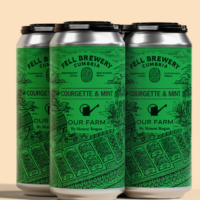
1. The base standard of rosé is high
Despite the large number of samples in the 2020 Global Rosé Masters, nearly every single wine achieved a medal, with a notably high number of Silvers reflecting the quality in the category, which, in turn, is testament to good vineyard practices, and, in particular, cellar management, with temperature control especially important at all stages of rosé winemaking. Furthermore, quality control appears excellent: we had no wines rejected because of common faults, such as marked oxidation or TCA spoilage. Only a few showed some evidence of excessive sulphur use.
2. Rosés are paler than ever
There has been a standardisation in pink wine appearance, with almost all rosés now the same pale salmon pink of Provençal rosé. But Provençal producers have themselves made subtle changes to the look of their wines, gradually making them even paler. Perhaps this is to distance themselves from everyone else, by going for an even more delicate pink? Whatever the reason, when it came to some wines this year, it was hard to tell that they were rosés at all.
3. Rosés are ripe and refreshing
A few years ago, after our annual Global Rose Masters, I remember thinking that pink wine producers were sacrificing the fruitiness of rosé in the desire for delicacy, and, as result, some wines had herbaceous characters, with aromatics similar to Sauvignon Blanc. But I have rarely noted such flavours in the samples this year. It seems winemakers have taken a step forward, and are now able to craft delicate, refreshing rosés with fully ripe grapes. At their best, such wines have flavours of wild strawberry and peach, even if the finish is citrus fresh.
4. There is no such thing as rosé
If once one were to think that by choosing a wine by its colour, pink, one was selecting a singular wine style, today, that is not the case. Rosé does not represent one consistent wine style, and can now be almost a neutral white, close to a sweet red, or taste like a fine wine, such as a great Graves blanc. The only problem from this shift within the rosé category, however, is managing consumer expectations. For example, people won’t be surprised at sniffing vanilla-scented oak in their glass of pricy white, but it can come as a shock when they find the same scent in their pale pink refreshment.
5. Rosé is now a luxury drink
Why should a wine style be prevented from attaining top-end status because of its colour? In the case of rosé, it was; purely because anything pink was deemed frivolous. But today, rosé can be a successful luxury product. I even tasted a barrel-fermented rosé from Gérard Bertrand in this year’s Masters that has characters not unlike top white Bordeaux – vanilla, toast, pineapple and citrus – and a similarly-high price tag too: it retails for almost £170.
6. Provence is still number one
Côtes de Provence is to rosé what Champagne is to sparkling wine: it is the class leader, with an enviable image to match its peerless products. While this year’s Global Rosé Masters saw plenty of pink wines from places outside Provençal boundaries, it was this region’s rosés that took home the majority of top medals – that is, when it came to dry rosés, including those fermented in barriques like fine Bourgogne blanc.
7. Provence still needs to watch its back
Having just said that Provence holds the top spot in the pink wine category, it also needs to work hard to stay ahead of the competition. Again, like Champagne, the alternatives from elsewhere are getting closer to the ‘real thing’ in style and quality – sometimes at keener prices too. If I were to pick out one player leading the way in fantastic pink wines from outside Provence, it would be Gérard Bertrand from the Languedoc. OK, so this producer is not far from the famous region, but his rosés are remarkable, particularly his new, organic, part barrel-fermented version called Joy’s.
8. Look to the Med
In general terms, the pink wine greats tend to be sourced from the Mediterranean. But this is a large area stretching well beyond just Provence and the Languedoc. Much of the highest-scoring wines in this year’s Masters were from places near this famous European sea, including, for example, Greece – where the winemakers from Alpha Estate are masters at crafting delicious pale, bright-tasting pinks using native grapes – or Sicily, particularly Scalunera’s Etna Rosato from Torre Mora. Other places included a powerful but mouth-watering sample from Priorat’s Scala Dei, or a host of delicate pinks from along the Tuscan coast – notable producers being Banfi and Frescobaldi.
9. Grenache is the grape of rosé
We had plenty of fantastic rosés from a range of grapes, such as Italian natives Sangiovese and Nerello Mascelese, or, of course, Pinot Noir, particularly in the New World (and England), Xinomavro in Greece, and Bordeaux grapes from several places, not forgetting some lovely Syrah-based rosés. But, generally, the top-scorers were made with Grenache, or Garnacha as its called in its native home of Spain. From the leading wines of Bertrand, d’Esclans, Leoube, Ott, Minuty, Mirabeau and Chivite, to name just a few, it was Grenache that dominated the blend. Nevertheless, rarely is it used exclusively. And Vermentino/Rolle, with its grapefruit-like freshness, is a particularly good partner for it.
10. Pink fizz has class
If rosé is seen as fun, then sparkling rosé is viewed as frivolous. But the reality today is that pink fizz can be a delicious product with fine wine credentials – and generally higher prices than its blanc equivalents. This has been proven in past Global Rosé Masters with Champagne Laurent-Perrier’s Cuvée Alexandra Rosé – a pink fizz costing almost £300 – but this year it was confirmed by great pink fizz from England’s Gusbourne Estate, Bourgogne’s Maison Louis Bouillot, and Champagne’s Nicolas Feuillatte, particularly its Cuvée Palmes d’Or 2008. Each of these were a highly serious glass of wine that happened to be pink.





